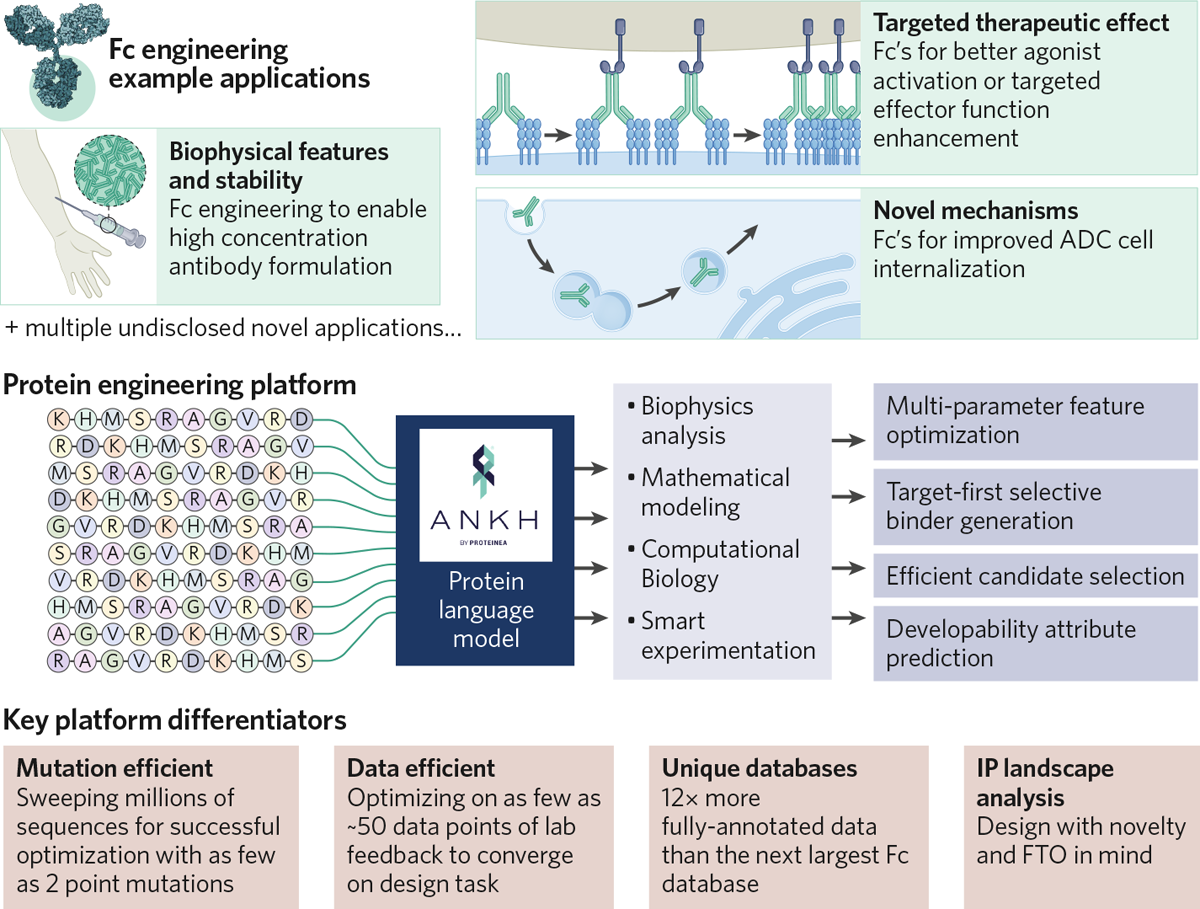
- Select a language for the TTS:
- UK English Female
- UK English Male
- US English Female
- US English Male
- Australian Female
- Australian Male
- Language selected: (auto detect) - EN
Play all audios:
Developers of artificial intelligence (AI) platforms are stretching to meet the needs for design of antibody therapeutics, including new tool sets that enable faster design of better
molecules. While AI has demonstrated immense potential in computational antibody design, challenges remain in successfully applying AI to difficult optimization problems. This challenge has
been taken up by Cairo- and Massachusetts-based Proteinea, which was founded to address the difficult issues in applying AI to protein-based drug development. The company was founded in
Cairo in 2019 by Mahmoud Eljendy and Abdulaziz Elgammal. The pair was seeking to improve biologics development, and in parallel, help build Egypt’s biotech profile. Proteinea quickly raised
$6.5 million in seed funding, and has now expanded to 42 employees, with offices near Boston and in Cairo, and a laboratory at KAUST (King Abdullah University of Science and Technology) in
Saudi Arabia. LEARNING A NEW LANGUAGE Proteinea is enabling optimization of antibodies through platforms powered by its novel protein language model (PLM), Ankh (Fig. 1). The technology
caught the eye of Google, which supported early development with Google research innovator to develop Ankh on the Cloud TPU v4, before it was publicly available. Soon after, Proteinea began
attracting interest from biopharma heavy hitters like Amgen, which supported its U.S. growth through the Boston expansion. According to Mohamed Elkerdawy, Proteinea’s Chief Information
Officer, Ankh represents a new approach to PLM. “Others have built PLMs based on assumptions from natural language processing. From the outset, we challenged those assumptions, and found
that some elements don’t work as well for PLM,” said Elkerdawy. This distinction helped Proteinea address several common issues with utilizing AI for protein and antibody engineering. The
first is the large amounts of data typically required, which makes these efforts complex and expensive. “AI models are like huge data beasts, and protein engineering is done typically in a
data-massive way,” said Elgammal, Proteinea’s Chief Product Officer. But thanks in part to training on TPU v4, Ankh is extremely efficient. “We can begin meeting protein design objectives
with as few as 50 data points from a lab, using less than 10% of the computational demand for what used to be considered state-of-the-art,” Elgammal added. APPLYING TOOLS TO FC ENGINEERING
Proteinea is simultaneously exploring multiple compelling opportunities where it can customize and apply its AI platform capabilities. The company is seeking biopharma drug development
partnering opportunities, while also developing dedicated expertise in several areas to provide high-value IP for licensing. With the tools to reduce cost and complexity, one of the
company’s first projects is engineering innovation in the Fc antibody domain, to improve both biophysical properties and biological functions for better convenience, efficacy, and
therapeutic window. Excessive point mutations of Fc amino acids raise the risk of immunogenicity, and the more random traditional approaches struggle to efficiently identify the right few
mutations. But Proteinea excels in point mutation efficiency. “We can computationally sweep millions of potential sequences and optimize function with as few as two amino acid
modifications,” said Elkerdawy. Another challenge relates to the hype around AI. Early AI entrants positioned their platforms as a panacea for a huge swath of potential antibody design
challenges—then drastically underdelivered. Instead, Proteinea leverages its capabilities to tackle more specialized challenges in the field. “As a result, it is much easier to demonstrate
the novelty and functionality of our platforms, mutation by mutation,” said Elgammal. The company’s first Fc program, Fc-SubQer, introduces plug-and-play novel proprietary modifications to
the Fc domain that improve the antibody to facilitate formulation at high concentrations, a requirement to move from intravenous to a much more convenient subcutaneous administration.
Subsequent programs are developing hard-to-design Fc domains that address known disease-related mechanisms for oncology as well as immunology and inflammation areas. PREPARED FOR
PARTNERSHIPS Proteinea is seeking to partner with therapeutic drug developers that could benefit from licensing of Fc-SubQer domains to enable high-concentration formulation of their
preclinical drug programs, or by also using the broader suite of AI protein design tools for asset co-engineering. In addition, it will explore novel opportunities in Fc engineering with
platform co-development partners to enable development of innovative medicines. “We’ve spoken to mid-sized and large pharmaceutical companies with antibody programs,” said Elgammal. “They
are coming to understand the power of Proteinea’s protein engineering approach, and recognize we have the best platform to efficiently optimize their assets and engineer Fc’s with potential
for breakthrough therapeutic effects.”






